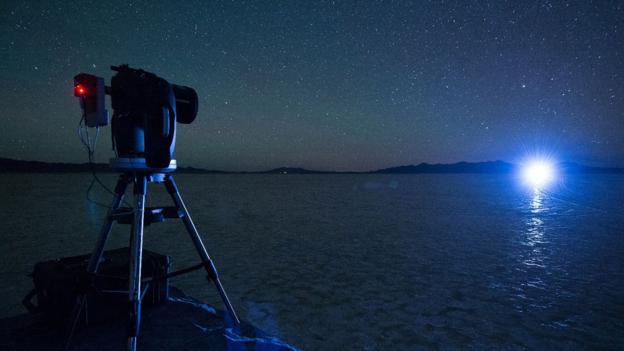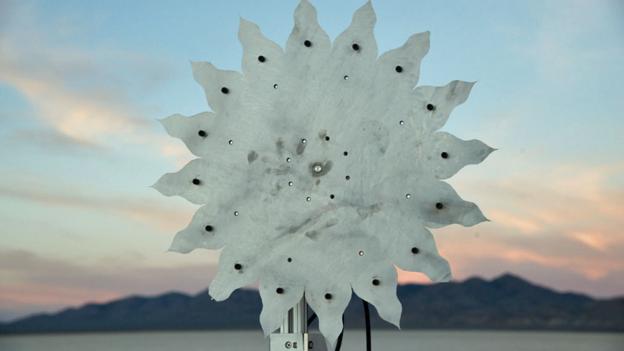
Alien hunting isn’t just tabloid fodder anymore. Over the last few years, astronomers have discovered thousands of planets outside the Solar System, suggesting that the galaxy is teeming with worlds – at least as many as one planet per star, on average.
The existence of so many planets raises the odds that at least one of them has life – and it’s possible there may even be an Earth “twin” – making alien-hunting a bona fide scientific endeavour. “We’re now ready to make the transition from ‘are there planets?’ to ‘is there life on these planets?’” says Nick Siegler, the chief technologist of Nasa’s Exoplanet Exploration Program. “That’s a huge shift in how Nasa’s thinking about the search for life and what’s next in the world of planetary science.”
The trouble is, it’s harder than it seems to spot life from millions of miles away, especially if it’s not intelligent. Sara Seager is a scientist looking for signs of life on earth like exoplanets. She believes that the key is to scrutinize the atmospheres of these alien worlds.
One of the technologies that could help researchers like Seager achieve their goal is a seemingly crazy flower-shaped contraption called Starshade. It’s a sort of giant space parasol designed to block light from a star, allowing a telescope to avoid the star's glare and peer into the planets in orbit – and, possibly, reveal signs of alien life.

“If we want to find a true Earth twin in the near future – like in the next decade or two – then yes, we definitely need to do the Starshade,” says Seager, who is based at Massachusetts Institute of Technology (MIT).
That’s because a Sun-like star is 10 billion times brighter than an Earth-sized planet. The only hope astronomers have for glimpsing any hint of life – likely some form of microorganism – would be to somehow block the light from such a star, allowing a telescope to directly observe the planet itself. It’s a strategy radically different from the main way astronomers have discovered and studied planets so far.
Because planets are so distant, small, and faint, astronomers have mostly probed them indirectly – for example by detecting dips in starlight when a planet passes in front of its star or by measuring how the star wobbles when a planet’s gravity tugs on it. But alien-hunting demands a new tactic.
Scientists hope to identify the gases in the planet’s atmosphere, and detect chemicals that suggest the presence of life – chemicals like oxygen, which comprises 20% of Earth's atmosphere.
The glare of a distant light in Starshade tests illustrates how hard it is to see anything in detail close to a star
“Without life – plants or photosynthetic bacteria – we would have virtually no oxygen,” Seager says. Which is why oxygen is one of the most promising so-called biosignatures. But life on Earth produces all kinds of gases, and alien life could be even more diverse. The challenge is in determining whether these chemicals are biological in origin.
Although no-one’s found any signs of life yet, astronomers have already sniffed out some atmospheres. When a planet passes in front of its star, the starlight penetrates the gaseous layer enveloping the planet. The molecules in the atmosphere absorb specific wavelengths of light, depending on what the chemical is. By measuring which wavelengths are absorbed, astronomers can identify the gases.
Bigger telescopes like the James Webb Space Telescope, slated for launch in 2018, will be able to use this transit technique to resolve atmospheric chemistry in greater detail. It could even conceivably detect biosignatures. “It could get lucky,” Siegler says. But this method is only good for planetary systems around small stars called M dwarfs – not around Sun-like stars.
The Starshade is launched with a telescope, and when it reaches its position in deep space, it will unfurl and expand to a diameter as wide as 34m (112ft). The petals, which will likely be razor-sharp, remove the effects of diffraction, in which light waves bend around the edge of the shade and produce unwanted glare. The shade and telescope will then separate by as much as 50,000 kilometres (31,250 miles) – almost four times the diameter of Earth.
Suffice to say, this isn't easy. But researchers have shown the idea to work with experiments in the desert, using a lamp, a model Starshade, and a camera. See below:
A test Starshade much smaller than the final version was used to explore the technique in the desert
If the project gets enough funding and all goes well, Nasa could launch Starshade as early as 2026. “We don’t see any technical impediments to complete a Starshade and be flying it in the 2020s,” Kasdin says.
Another step toward finding the elusive 'Earth 2'.
For my junior scientists.....Love Aunt Jeannie


Aunt Jeannie ,
ReplyDeleteI had a great birthday , so much fun , my first dance was with mama , I love mama so much she is fun . I have a job , Chris and I deliver fed-ex and ups packages on the compound , they are left at the guard house , they do not drive in the compound they drive to fast , Chris and I deliver them in our brothers wagons . Daddy and mama got me a golf cart , daddy said not to leave the grounds in it . The best Birthday present , I am a lucky kid .
Humans is in no way ready for contact with other races of beings. We are too primitive and barbaric to have any peaceful relations with anyone we cannot even get through one day without killing our fellow humans how are we to interact with others ?
What will we do with these aliens when we find them?
If the object was in fact an array of solar panels then we think the panels would reflect a certain amount of light that would remain consistent with a surface of reflection reflecting the light back at an even amount. The light dimming might suggest that there are breaks in the structures surface where light would fall into creating the dim that would then return to light value as the object turned over and over. Think of a piece of steel bar with slots cut in the side. As the bar turns on its center line clockwise the suns reflection on it would remain constant until the sun encountered a slot where the light would fall into thus causing a dim effect to take place compared to the rest of the surface.
If the object is a swarm of comets wouldn't the signal actually be getting smaller and smaller as it moved toward the sun due to the comets vaporizing as they got closer and closer to the sun and the simply vanished? If the signal gets smaller and smaller and continues to get smaller with more data then the comet theory would be viable.
If the signal seems to get smaller and smaller and then returns to a pattern of being the same signal towards its sun the signal would be lost very rapidly as the heat vaporizes the comets as they come close to the sun.
It would be awesome to actually find alien life!! we have no doubt that it exists. Why would they be be the only ones out here living in the vastness of outer space? It is just not very probably that we are the only planet capable of sustaining life.
Well, a Death Star in the making. It's occluding more light on each pass around it's sun. That means it's either getting bigger or farther from their sun.
Maybe, that light we are seeing left that star system over a thousand years ago. It's probably been completed by now.
Aunt Jeannie we did a paper like this one in September for a NASA project , we are going to show this to our science teacher . I asked daddy what word we could use about a death star in the making , daddy said occluding .
Thank you so very much and we love you a bunch hope you are feeling better Aunt Jeannie .
Wrote by
Jonny and Chris
Hello Jonny and Chris,
ReplyDeleteIt sounds like you had an outstanding birthday Jonny. I bet your dad or poppa took a picture of you dancing with your Mama. That's a keeper.
I can't believe you got a golf cart...hahahaha! That will be the most fun ever. And you have a big compound to learn to drive in. I bet every kid there will jump on the cart with you and hitch a ride. You may have to put a trailer on the back to give them all a hay ride in.
Man, you are so right about us not being ready to meet or communicate with extraterrestrials. According to Dr Kaku, there are three stages of civilization: 1) planetary (smart).....2) stellar (much much smarter)....3) galactic (so brilliant they are millions of years ahead of us)....Guess where we fit in.....we are at 0 (zero) We may get to number one in a hundred years or so.
You sure have done your homework on stellar occlusion. I am so impressed with the amount of knowledge you have on the subject. This is the science they are working with right now. It's the best we have at the moment.
Our telescopes can probe so deep into space now that the oldest light we can see is from about 300,000 years after the Big Bang. That would make it from 12 to 14 billion years old and it is still travelling and making up the cosmic microwave background. Sometimes these things are too big for me to get my brain around and I almost have a brain hemorrhage. Your generation will understand all this cosmic stuff a lot better.
I honestly believe we will discover a microbial form of life soon, or at least fossil evidence that life existed and I think it will be on Mars. It would be wonderful to know that it's quite possible we are not alone.
A lot of people think the earth has already been visited and there may be extraterrestrials among us. I wonder if Uncle Sal has ever met one. He has lived long enough to meet just about everybody...HA!
Love you guys
Aunt Jeannie.